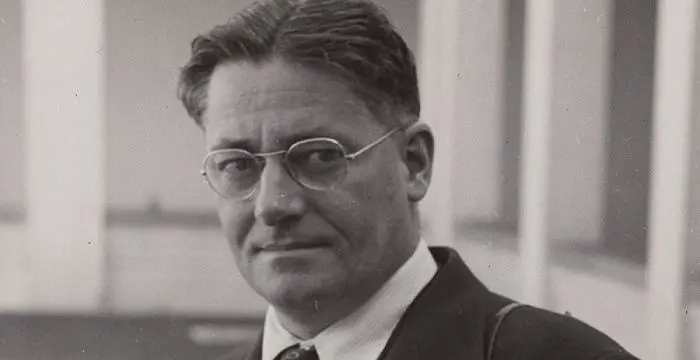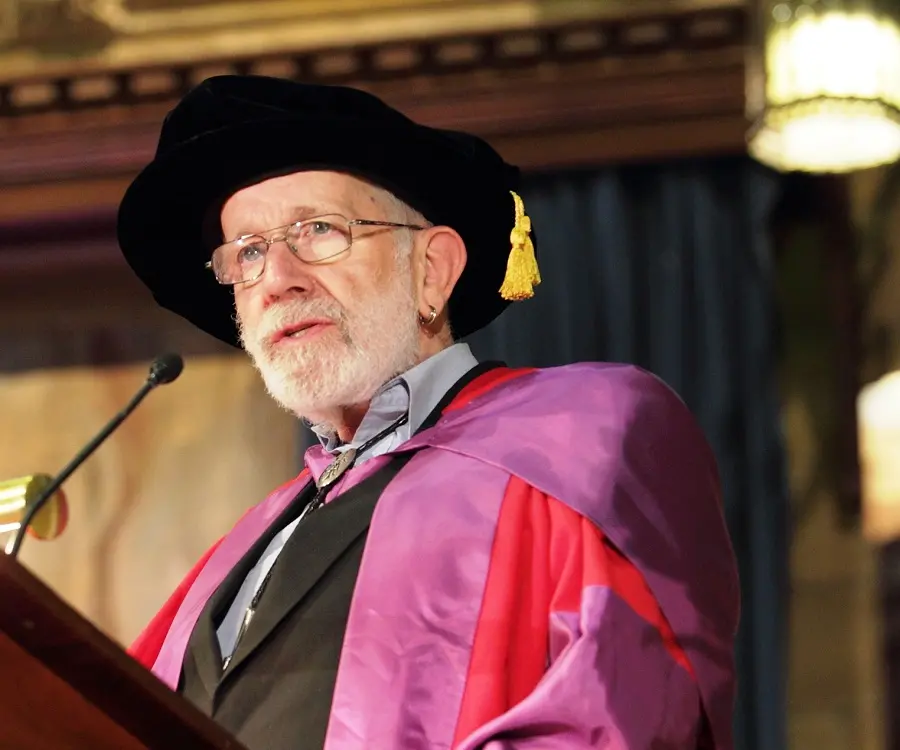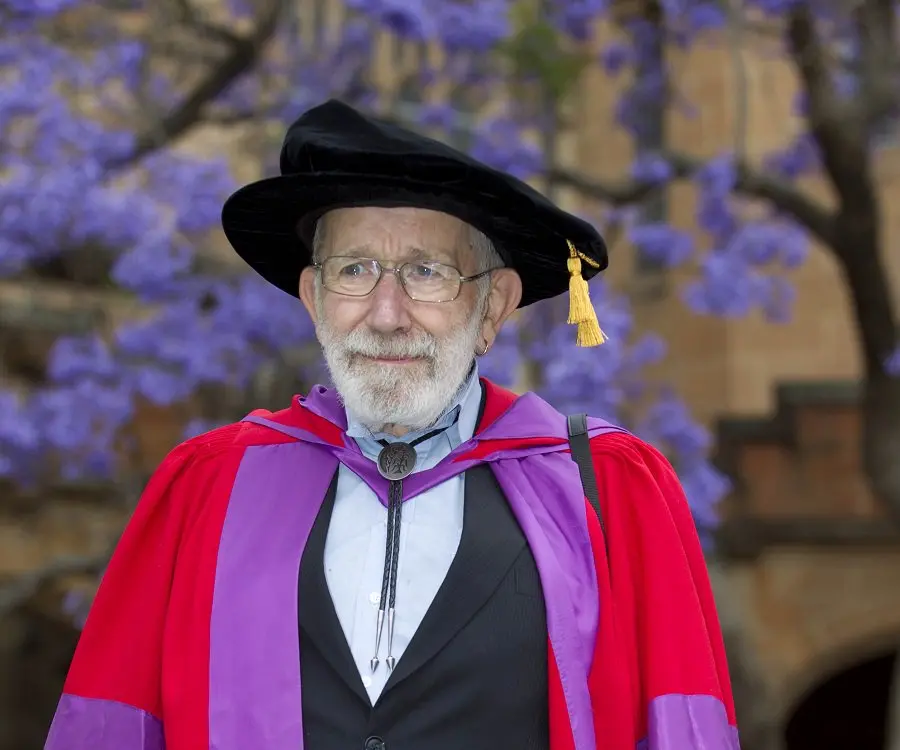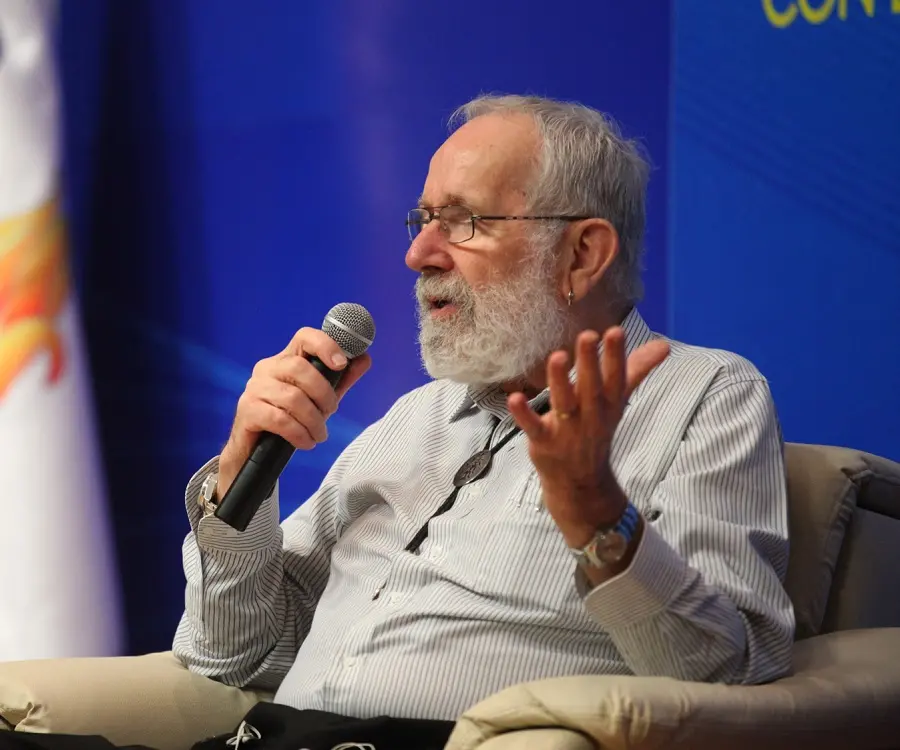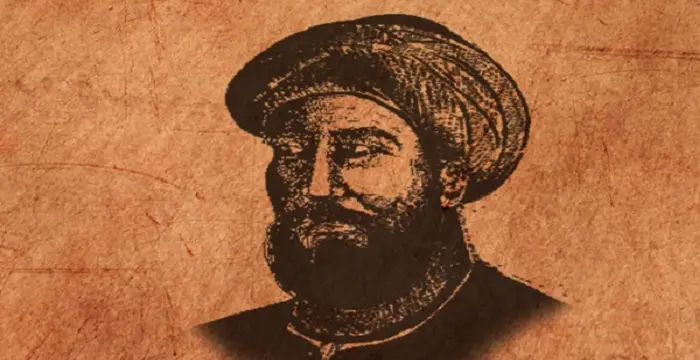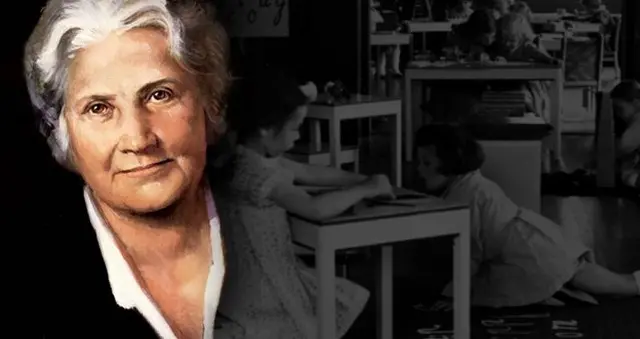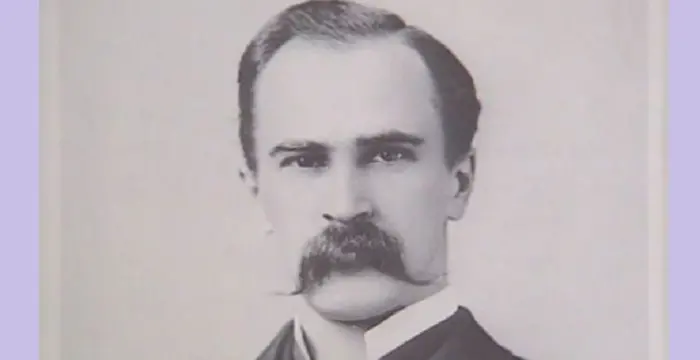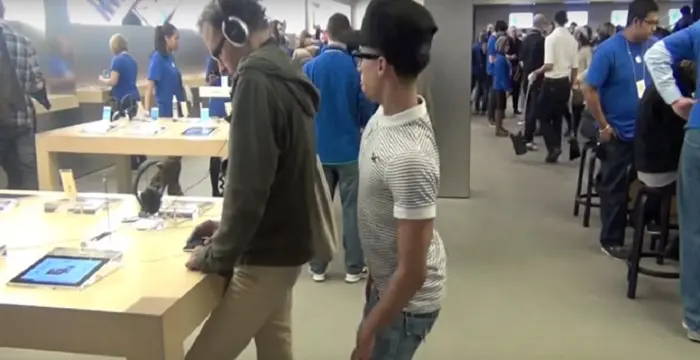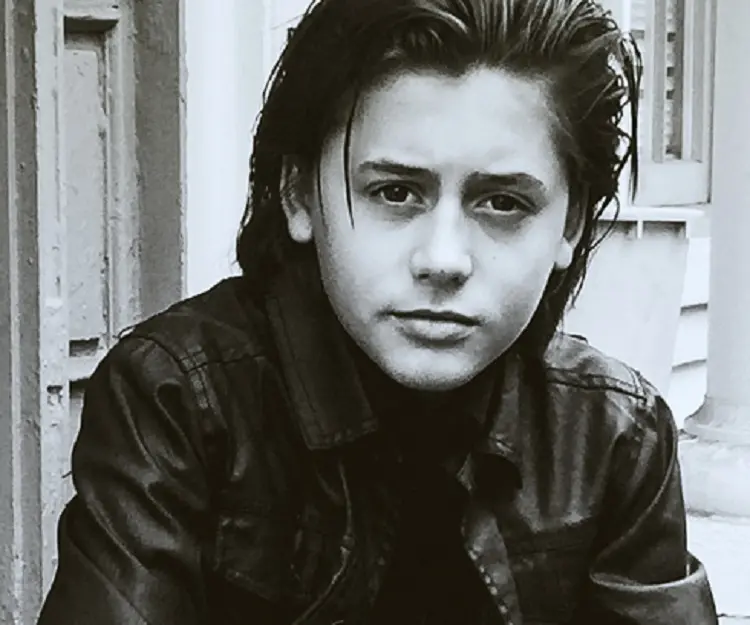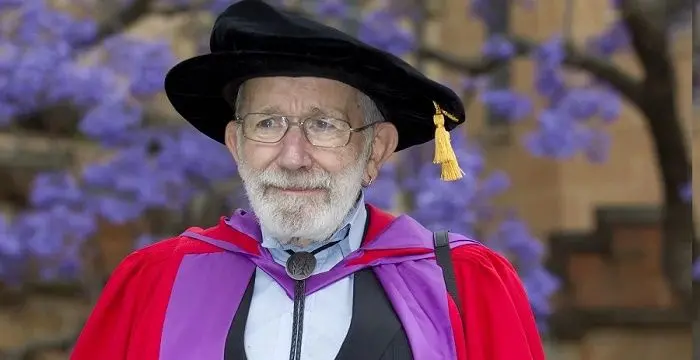
Robin Warren - Pathologists, Life Achievements and Facts
Robin Warren's Personal Details
Robin Warren is an Australian pathologist who was conferred the prestigious Nobel Prize for the discovery of bacterium Helicobacter pylori
| Information | Detail |
|---|---|
| Birthday | June 11, 1937 |
| Nationality | Australian |
| Famous | Physicians, Pathologists, Pathologists |
| Spouses | Winifred Williams |
| Known as | John Robin Warren |
| Universities |
|
| Discoveries / Inventions |
|
| Birth Place | Adelaide, Australia |
| Gender | Male |
| Father | Roger Warren |
| Mother | Helen Verco |
| Sun Sign | Gemini |
| Born in | Adelaide, Australia |
| Famous as | Australian pathologist |
// Famous Pathologists
Howard Florey
Howard Florey was an eminent Australian pathologist who is credited for making penicillin available to the world. With this biography, explore about his childhood, life, achievements and timeline.
Jack Kevorkian
Jack Kevorkian was an American pathologist and euthanasia activist, commonly known as “Dr.Death” who assisted terminally ill patients in committing suicide. This biography provides detailed information about his life, achievements, works & timeline.
Robin Warren's photo
Who is Robin Warren?
Australian pathologist and Nobel Laureate, Robin Warren, needs no introduction. He won the Nobel Prize in Medicine in 2005 for the discovery of the bacterium Helicobacter pylori and its role in the gastritis and peptic ulcer disease. Warren’s life took a major turn when he noticed an unexpected bacterial growth in the gastric biopsy of a patient. Determined to find out the cause of it, he ventured forth and began extensively studying the same along with Barry Marshall. It took the duo seven years to eventually establish the presence of bacterium Helicobacter pylori as the major cause for peptic ulcer. Interestingly, their finding and research was not accepted by the scientific society which rebuffed the fact that bacteria of any kind could survive in the acidic environment of the stomach. It was only later on that the global community accepted the duo’s finding and thus awarded them with the prestigious Nobel Prize.
// Famous Physicians
Al-Zahrawi
Al-Zahrawi, was an illustrious medieval Arab Muslim physician and surgeon. Check out this biography to know about his childhood, family life, achievements and interesting facts about him.
Jabir Ibn Hayyan
Jabir Ibn Hayyan was a medieval era polymath. Check out this biography to know about his life, works and achievements.
Maria Montessori
Maria Montessori was a physician and educator who developed the approach of Montessori education. This biography of Maria Montessori provides detailed information about her childhood, life, achievements, works & timeline.
Childhood & Early Life
Robin Warren was born on June 11, 1937 in North Adelaide, Australia in a middle-class family. He was the eldest child of Roger Warren and Helen Verco. While his father was one of Australia’s leading winemaker, his mother was employed as a nurse.
It was from his mother that the young Warren imbibed the love for profession of medicine. Though she never coaxed him to take up the same as a career option, he nevertheless always aimed to study medicine since young.
He attained his preliminary education from a local primary school, Westbourne Park School and thereafter enrolled at St Peter’s College in Adelaide to complete his secondary education.
Matriculating in 1954, he gained a Commonwealth scholarship that secured him free tertiary education at the medical college in the University of Adelaide in 1955. It was while at the university that he gained knowledge in various science subjects such as zoology, botany, physiology, biochemistry, pharmacology, embryology and histology.
Career
Gaining a MBBS degree from the University of Adelaide, he joined as Junior Resident Medical officer at the Royal Adelaide Hospital. After completing his internship, he applied for the position of the registrar in psychiatry but could not make it through.
He then took up the profile of Registrar in Clinical Psychology at the Institute of Medical and Veterinary Science, a part of Royal Adelaide Hospital. The job profile included reporting on blood smears and bone marrow, examining faeces for parasites, examining urine and testing skin and nails for fungus. It was during this time that his interest in pathology was generated.
A year later, he took up the job of a Temporary Lecturer in Pathology at the Adelaide University. The work included researching on morbid anatomy and histopathology. Meanwhile, inspired and interested by the subject, he gained membership at the new College of Pathologists of Australia.
He later took up work as a Registrar of Clinical Pathology at the Royal Melbourne Hospital. It was while working in the profile that he gained tutelage under Dr David Cowling and Dr Bertha Ungar which enabled him to study further in haematology and microbiology.
Soon he was promoted to the position of Registrar in Pathology. By the end of his four years in Melbourne, he had gained college membership and had eventually become a full-fledged pathologist.
It was while trying to obtain a position as a pathologist at Port Moresby in Papua New Guinea that he was offered job by Professor Rolf ten Seldam, the Professor of Pathology at the University of Western Australia and the Royal Perth Hospital.
In 1968, he moved to Perth and took up the position at the Pathology department in the Royal Perth Hospital. Furthermore, he was elected to the Royal College of Pathologist Australasia. He stayed at Perth for the better part of his career until his retirement in 1999.
In 1970s, he developed an interest in the new gastric biopsies that were becoming popular. During this time, peptic ulcers were believed to have been caused due to excess of gastric acid which again was the result of a stressful lifestyle.
In 1979, he first observed the presence of spiral shaped bacteria in a biopsy of a stomach lining in a patient. The finding was in sharp contrast with the conventional belief that bacteria could not survive in the highly acidic environment and thus his reports were rebuffed by scientists.
In 1980, he befriended Barry Marshall and the two agreed to take a clinical-pathological study of the same. Both began to work jointly to come up with the clinical significance of the bacteria.
It was during their study of 100 stomach biopsies that they eventually found that the bacteria were present in almost all patients with gastritis, duodenal ulcer, or gastric ulcer.
In their seven years of study, the duo finally deduced that the Helicobacter pylori bacteria were involved in causing the illness and when properly treated, recurrence of peptic ulcer was rare. He proved the same at the University of Western Australia.
The duo not just determined the presence of Helicobacter pylori bacteria in the body, but developed a convenient diagnostic test (C-urea breath-test) for detecting the same in ulcer patients. Furthermore, it was due to their finding that a new treatment was devised consisting of antibiotics and acid-secretion inhibitors for curing peptic ulcer disease.
It was in the decade of 1990 that the findings of the two pathologists were finally recognized by the medical community. In 1996, he was invited to Japan for a lecture tour. This was followed by three-month tour to Germany and other countries in 1997 during which their work of actually recognized by the global medical community.
In 1999, following his retirement, he pursued his hobby of photography. However, with the distinctive distinction of being awarded Nobel Prize, he resumed his medical career, attending meetings and presentations.
Awards & Achievements
In 1994, he was awarded with the Warren Albert Foundation prize.
In 1995, he received an award by the Western Australian Branch of the Australian Medical Association. Same year, he was felicitated with the Distinguished Fellows Award by the Royal College of Pathologists of Australasia for his distinguished Service to the Science and Practice of Pathology.
In 1996, he received the inaugural award at the First Western Pacific Helicobacter Congress for his contribution in medical science. Same year, he received a medal from the University of Hiroshima and Distinguished Alumni Award from University of Adelaide Alumni Association.
In 1997, the Paul Ehrlich Foundation, Johann Wolfgang Goethe-Universit�t and Frankfurt am Main, Germany jointly bestowed on him the Paul Ehrlich and Ludwig Darmstaedter Award for his discovery of Helicobacter pylori.
The University of Western Australia conferred upon him the prestigious Honorary degree of Doctor of Medicine in 1997. Same year, he was recognized as a guest speaker at the Centenary Meeting of the German Society of Pathology
In 2000, the Australian Institute of Political Science presented him the Cavalcade of Australian Scientists of the 20th Century for his scientific research in the field of medicine.
It was in 2005 that he along with Barry Marshall was felicitated with a Nobel Laureate in Physiology or Medicine for the discovery of bacterium Helicobacter pylori and its role in gastric and peptic ulcer disease.
In 2007, he was made Companion of the Order of Australia.
Personal Life & Legacy
It was while interning at the Royal Adelaide Hospital that he first met Winifred Williams. Ever since their first meeting, the two struck a chord together. The relationship materialized into marriage and the couple was blessed with five children.
Winifred Williams later became an accomplished psychiatrist.
// Famous Pathologists
Howard Florey
Howard Florey was an eminent Australian pathologist who is credited for making penicillin available to the world. With this biography, explore about his childhood, life, achievements and timeline.
Camillo Golgi
Camillo Golgi was an Italian physician, biologist and pathologist who won the Nobel Prize for Physiology or Medicine in 1906.
William Osler
William Osler was a Canadian Physicist and founding father of Medicine and Medical Service at Johns Hopkins Hospital in USA. Read this biography to know more about his life.
Robin Warren's awards
| Year | Name | Award |
|---|---|---|
Other | ||
| 0 | Nobel Prize in Physiology or Medicine (2005) | |
Robin Warren biography timelines
- // 11th Jun 1937Robin Warren was born on June 11, 1937 in North Adelaide, Australia in a middle-class family. He was the eldest child of Roger Warren and Helen Verco. While his father was one of Australia’s leading winemaker, his mother was employed as a nurse.
- // 1954Matriculating in 1954, he gained a Commonwealth scholarship that secured him free tertiary education at the medical college in the University of Adelaide in 1955. It was while at the university that he gained knowledge in various science subjects such as zoology, botany, physiology, biochemistry, pharmacology, embryology and histology.
- // 1968In 1968, he moved to Perth and took up the position at the Pathology department in the Royal Perth Hospital. Furthermore, he was elected to the Royal College of Pathologist Australasia. He stayed at Perth for the better part of his career until his retirement in 1999.
- // 1979In 1979, he first observed the presence of spiral shaped bacteria in a biopsy of a stomach lining in a patient. The finding was in sharp contrast with the conventional belief that bacteria could not survive in the highly acidic environment and thus his reports were rebuffed by scientists.
- // 1980In 1980, he befriended Barry Marshall and the two agreed to take a clinical-pathological study of the same. Both began to work jointly to come up with the clinical significance of the bacteria.
- // 1994In 1994, he was awarded with the Warren Albert Foundation prize.
- // 1995In 1995, he received an award by the Western Australian Branch of the Australian Medical Association. Same year, he was felicitated with the Distinguished Fellows Award by the Royal College of Pathologists of Australasia for his distinguished Service to the Science and Practice of Pathology.
- // 1996It was in the decade of 1990 that the findings of the two pathologists were finally recognized by the medical community. In 1996, he was invited to Japan for a lecture tour. This was followed by three-month tour to Germany and other countries in 1997 during which their work of actually recognized by the global medical community.
- // 1996In 1996, he received the inaugural award at the First Western Pacific Helicobacter Congress for his contribution in medical science. Same year, he received a medal from the University of Hiroshima and Distinguished Alumni Award from University of Adelaide Alumni Association.
- // 1997In 1997, the Paul Ehrlich Foundation, Johann Wolfgang Goethe-Universit�t and Frankfurt am Main, Germany jointly bestowed on him the Paul Ehrlich and Ludwig Darmstaedter Award for his discovery of Helicobacter pylori.
- // 1999In 1999, following his retirement, he pursued his hobby of photography. However, with the distinctive distinction of being awarded Nobel Prize, he resumed his medical career, attending meetings and presentations.
- // 2000In 2000, the Australian Institute of Political Science presented him the Cavalcade of Australian Scientists of the 20th Century for his scientific research in the field of medicine.
- // 2005It was in 2005 that he along with Barry Marshall was felicitated with a Nobel Laureate in Physiology or Medicine for the discovery of bacterium Helicobacter pylori and its role in gastric and peptic ulcer disease.
- // 2007In 2007, he was made Companion of the Order of Australia.
// Famous Gemini Celebrities peoples
Wentworth Miller
Wentworth Miller is an American actor and screenwriter who achieved recognition for his role in the TV series ‘Prison Break’.
Joyce Meyer
Joyce Meyer is a Christian author and speaker. This biography provides detailed information about her childhood, life, achievements, works & timeline
Zoe LaVerne
Zoe LaVerne is an American musical.ly star. Check out this biography to know more about her family, personal life, including her age, birthday, etc.
WolfieRaps
Check out all that you wanted to know about WolfieRaps, the famous YouTube Personality; his birthday, his family and personal life, his girlfriends, fun trivia facts and more.
Adam Saleh
Check out all that you wanted to know about Adam Saleh, the famous YouTube Personality; his birthday, his family and personal life, his girlfriends, fun trivia facts and more.
Isaak Presley
All about American actor and singer Isaak Presley including his age, birthday, family life, girlfriends, net worth, and some fun facts.
Robin Warren's FAQ
What is Robin Warren birthday?
Robin Warren was born at 1937-06-11
Where is Robin Warren's birth place?
Robin Warren was born in Adelaide, Australia
What is Robin Warren nationalities?
Robin Warren's nationalities is Australian
Who is Robin Warren spouses?
Robin Warren's spouses is Winifred Williams
What was Robin Warren universities?
Robin Warren studied at M.B.B.S.
What is Robin Warren's inventions/discoveries?
Discovery Of The Bacterium Helicobacter Pylori was invented (or discovered) by Robin Warren
Who is Robin Warren's father?
Robin Warren's father is Roger Warren
Who is Robin Warren's mother?
Robin Warren's mother is Helen Verco
What is Robin Warren's sun sign?
Robin Warren is Gemini
How famous is Robin Warren?
Robin Warren is famouse as Australian pathologist
